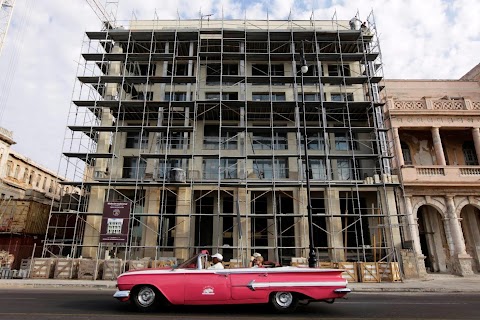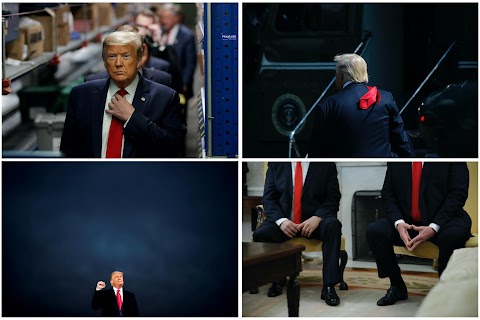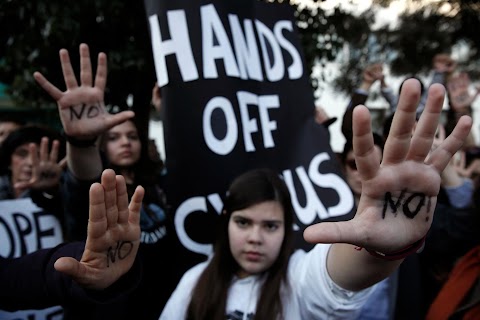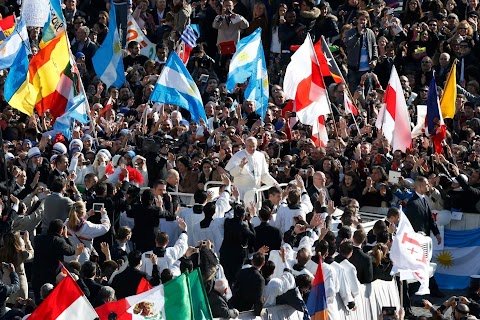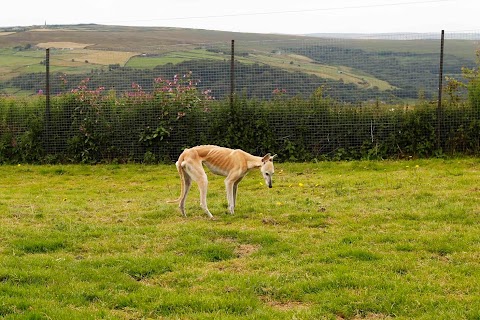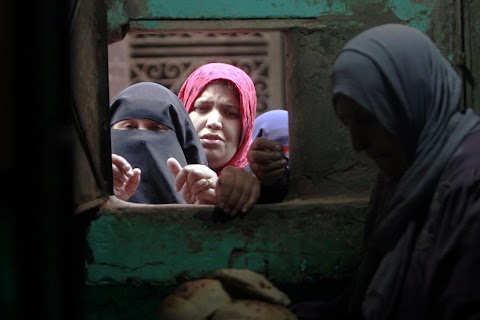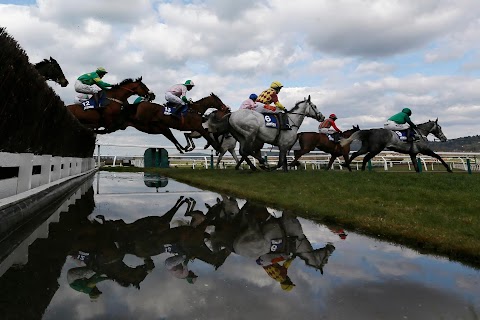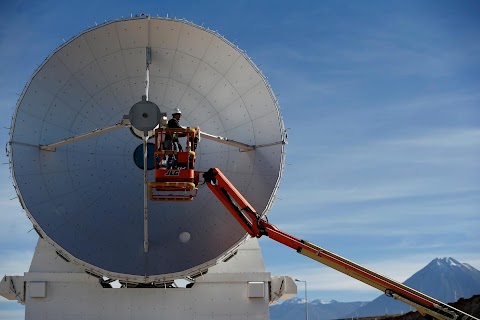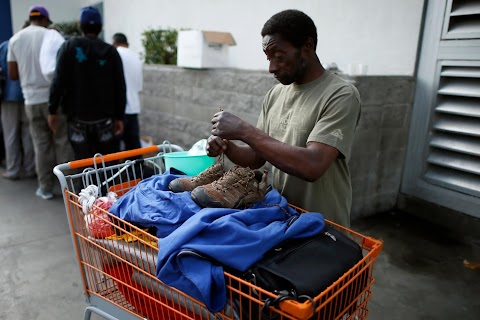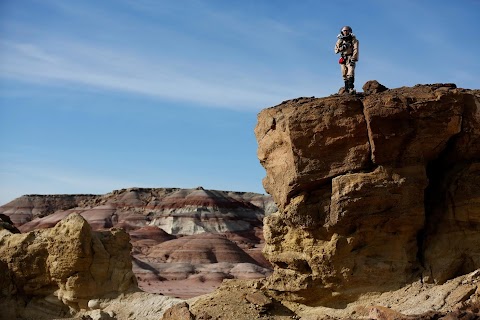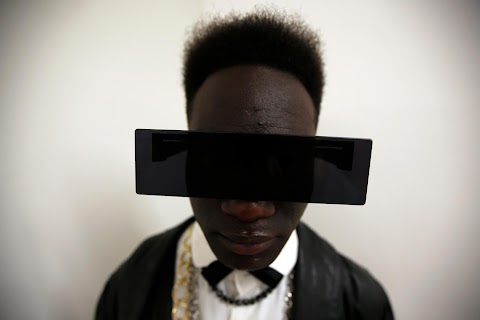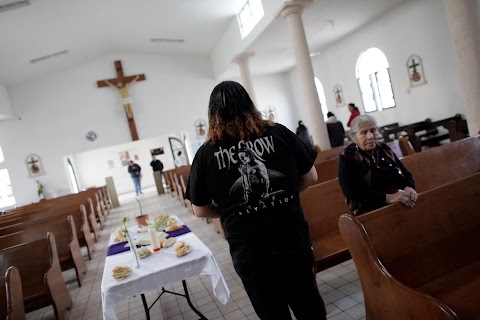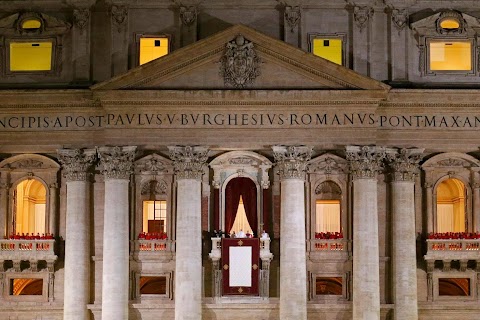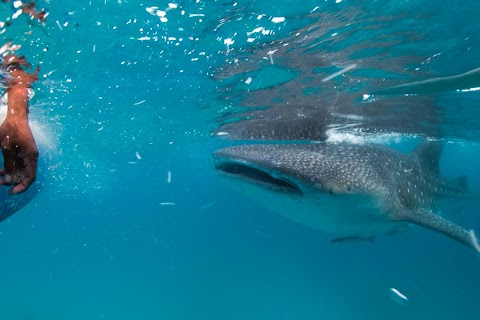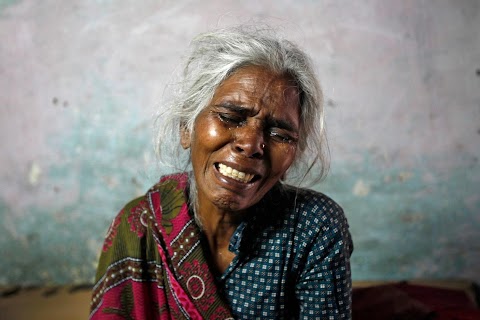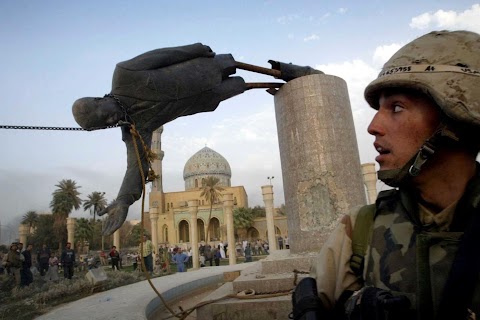
Ten years on
 Goran Tomasevic
Goran Tomasevic
A decade has passed since the U.S.-led invasion of Iraq.
In this collection of iconic Reuters images from the conflict, the photographers provide a personal account of the events they witnessed from behind the lens.

U.S. Navy Hospital Corpsman HM1 Richard Barnett, assigned to the 1st Marine Division, holds an Iraqi child.
Damir Sagolj: “This is my most published picture from the Iraq war. The original caption says: ‘A medic holds a child after the confused front line crossfire ripped apart an Iraqi family after local soldiers appeared to force civilians towards U.S. Marine positions.’ That’s as much as I knew at the moment that I sent the picture to the Reuters desk.
Ten years later I know a bit more about the child and her family as some papers and magazines followed the story, but not much more about the sad incident that happened that day.
It was supposed to be a day off for the Marines on their way to Baghdad. I was resting in my fox hole with a broken foot when the frantic firefight broke out – small weapons and some heavy machine guns were fired at the edge of a camp.
After maybe 15 minutes (maybe more but it looked like five, really) the whole situation was over. What exactly happened I don’t know, nor will I ever know, but there were dead bodies around a dark brown bullet-ridden Russian-made car, several wounded people crying for help and some armed men captured in a field outside a base.
Apparently local gunmen in a military truck, whoever that might have been, were chasing a car full of civilians or forcing them somehow towards the small military base. Marines reacted as Marines usually react in such situations - they opened fire.
Soon after I sent my pictures, the Marine convoy was on the road again. The picture lived its life that I could control very little of – printed, celebrated, discussed and taken out of and back into context.”

A family flees past a destroyed Iraqi T-55 tank after a mortar attack on British Army positions in the city of Basra.
Chris Helgren: “A few days after crossing the Iraqi frontier from Kuwait, where we’d watched the nighttime assault from atop a water tower, British Army lines were edging closer and closer to the major southern city of Basra.
Roads were jammed with local people heading towards us, but curiously enough a large number were also returning back home with supplies. Our Reuters multi-media crew, riding in an armored Land Rover nicknamed “Brenda the Defender”, continually tried to keep an eye on what was going on.
Finally, on May 28 cameraman Fedja Grulovic and I were able to make it across the Zubair bridge spanning the Shatt al-Basrah waterway and into Basra’s city limits.
We were the first Western journalists to do so. The British Army were prodding the lines on the edge of the city up ahead, sending Warrior fighting vehicles up and down a road flanking the city’s technical institute.
When the British got close, a barrage of mortars was unleashed by the Iraqi forces, prompting the withdrawal of the Warriors. Unfortunately, we and a number of civilians were also on the road. I saw a group of them running towards me and shot a few frames of this family passing a destroyed tank. Within seconds Fedja and I had to dive under the same tank, making room for an Iraqi cyclist too, as mortar shells exploded around us.
Luckily nobody was injured, but British propaganda officers soon appeared to announce that the Iraqis were shelling their own people, neglecting to mention that the barrage was prompted by the presence of British Army reconnaissance vehicles.”

President George W. Bush walks past Humvee vehicles at Al-Asad airbase with Defense Secretary Robert Gates and Secretary of State Condoleezza Rice.
Jason Reed: “This picture was taken under the cover of darkness at an airbase in Anbar Province in the Iraq desert, on one of those secretive trips where you are told by a White House official to be at Andrews Air Force Base at a certain time on a particular day. No other details are given.
You show up, surrender your cameras and communication devices until Air Force One is in the air, and then find out you are on a top secret trip to Iraq.
No one back in Washington knew the President had even left the White House grounds until the travelling journalists with Bush broke news that we had landed at Al-Asad Airbase.
This was really one of the only pictures that showed Bush in-country. I recall all the others featured meetings with Iraq leaders in air-conditioned rooms on the base. I knew that Bush's brief remarks to the press outdoors were going to be the only opportunity to get something good.
My editors back in Washington and New York, who were calling and emailing for hours during our communication blackout to see if I was indeed on the trip, were relieved to see my pictures start coming in over the wires before we lifted off to Australia for the annual APEC meeting. I was more relieved when they called again to let me know that this image made the front of the ‘New York Times’, nice and big.”

An Iraqi detainee reaches out toward U.S. soldiers through the bars of his cell at Abu Ghraib prison outside Baghdad.
Damir Sagolj: “Abu Ghraib and the scandal of Iraqi prisoners being tortured was probably the biggest single story after the U.S. troops captured Baghdad. It was not the first time this prison was in the news – it was the most notorious jail during Saddam’s rule and we had already seen pictures of the execution chambers that hinted at the horror of the place.
But this was different and, in my opinion now from the distance of almost a decade, one of the most important moments that shaped the bloody war.
Naturally and unfortunately, it was not easy to cover the story. It was close to impossible and very dangerous. Our requests to get inside the prison were swiftly refused before we could even explain why and what we wanted to do.
Outside the prison and over thick layers of razor wire protecting Abu Ghraib, families and some very angry Iraqi people gathered daily to protest against what was happening inside. Tensions were super high and fingers very nervously on the trigger. Reuters cameraman Mazen Dana was shot dead by a U.S. soldier outside Abu Ghraib as he was filming.
All I could do – and that proved to be right thing – was to camp at the gates of the prison complex taking some easy pictures and hoping to have a chance to get in. To my surprise, one of the visiting delegations (it was some British parliamentarians and NGOs, if I remember correctly) agreed to take me into the prison with their convoy. The soldiers inside, confused by the whole scandal, were much easier to work with than those outside protecting Abu Ghraib.
I had a few quick minutes to shoot pictures inside the prison, including in the block that those famous 'happy snaps' came from. At one moment, as I was taking photos of empty corridors, a hand of an Iraqi prisoner came from behind the bars. I snapped a few frames.”

U.S. Marines carry an injured colleague to a helicopter near the city of Falluja.
Eliana Aponte: “I was sitting with a crew of soldiers playing cards next to military tanks. It was a boring day with nothing to do - just another day during my embed with the U.S. Marines from Charlie Company.
That crew was in charge of giving water and supplies to the soldiers who were inside Falluja, where there was heavy fighting. Many people died and many soldiers were injured. They went house by house looking for rebels.
Suddenly one mortar landed next to us, and we heard a very loud explosion. Nobody understood what happened in that moment, everybody jumped under the military vehicles. Those were scary seconds; you don't have too much time to react.
And then after 15 seconds another one. That one landed 50 yards from us – close enough for us to see how another crew of soldiers in front of us were blown to pieces.
With my job, I have seen many dead bodies and blood but this was my first time seeing how people disappeared into pieces - heads, arms, legs.
Everybody was completely paralysed. U.S. Master Sergeant Roy Meek from Charlie Company, screamed so loudly “This is Iraq, move!” And all the soldiers ran.
I started to take pictures from where we were. They didn’t let me move closer, the scene was really dramatic, Dante-esque. The only pictures were the soldiers carrying their colleagues, all of them trying to do something. The helicopters arrived so quickly. In the end, eight soldiers died - soldiers, young people, looking for a place to work in the army, without any experience of war.
This was one of the worst days of my life. You can lose everything in just one second.”

Policemen cry during a funeral for their colleague a day after a bomb attack in Baghdad's Jihad district.
Ahmed Malik: “I cannot forget this moment when I attended the funeral of policeman who was killed in a car bomb attack. There were many mourners including relatives and friends. No one attracted my attention except those policemen in uniform.
They were crying and grieving bitterly for their late colleague. I felt they were grieving themselves. They were mourning their future, their future that was held hostage in the hands of irresponsible people. All that I remember is I collapsed and cried with them.”

An Iraqi man holds the body of a boy after a car bomb explosion at a market in the neighbourhood known as New Baghdad, southeast of Baghdad.
Carlos Barria: “During a daily patrol in New Baghdad, the unit I was embedded with stopped for two hours at a corner in a crowded shopping area where they were guarding a security meeting between Iraqi and U.S. forces.
When the meeting was over we walked towards the vehicles to return to base. Four minutes after we left the intersection, two car bombs tore through the area, killing 60 people. I have little recollection of what came right afterwards; things were happening fast. A man emerged from the smoke in front of me, carrying a dead boy. I have often wondered why the bomb exploded four minutes after we left.
Did the driver of the car bomb get stuck in traffic and arrive late at his target? Or was there a decision to detonate the bomb right after the U.S. soldiers left to give people a sense of vulnerability? Or was the idea to show the soldiers the carnage? I'll never know.”

A row of U.S. Army helmets are balanced on M-16 rifles during a memorial for the 15 victims of a Chinook helicopter that was shot down by insurgents.
Chris Helgren: “About six months after the fall of Saddam Hussein’s regime, Iraq’s occupation was getting ugly.
Roadside bombs had begun to take their toll, and in early November 2003 our bureau in Baghdad was alerted to news that a U.S. Army Chinook helicopter had crashed.
Very shortly afterward it was apparent the chopper had been shot down, killing 15 soldiers and crew and wounding 26. A few days later one more of them died at a hospital in Germany.
This was the largest single U.S. loss of life to date in the Iraq war, and it really shook America. Most of the victims were from bases in the Midwest and Texas, as well as soldiers from Fort Carson, Colorado.
Three days after the crash I arrived at Al-Asad airbase to witness a memorial to the fallen. It was quite a sobering event, as troops quite visibly shaken formed up in front of a flatbed truck on which helmets were perched atop 15 rifles and pairs of desert boots.
The light was just starting to go and I made a few pictures of this scene with an azure sky before it faded to black."

An Iraqi man suspected of having explosives in his car is held after being arrested by the U.S army near Baquba.
Jorge Silva: “It was referendum day, when the people would decide on the country's controversial new post-Saddam constitution. Providing security during the historic referendum and keeping the voting stations safe was a key issue for U.S.-led forces, in order to validate the referendum results.
Baquba had emerged as one of the heaviest guerrilla enclaves, only 30 miles northeast of Baghdad. Several bans where announced for that day after Sunni groups urged a boycott of the vote. Gatherings of more than five men were not allowed, and a driving ban for all non-military or police vehicles was in place.
Since the early morning I had been on patrol with a company, visiting polling stations. The day was tense. Suddenly we ran into an old red car driving fast just in front of us. When the driver saw the army caravan, he turned around and accelerated, and a pursuit began.
He drove off the road onto a dusty path, which as we advanced narrowed into a wheat field. The path was difficult to navigate what with the size of the Hummers, and it began to look like a trap.
After some minutes of pursuit, with our vehicle almost stuck in the path, the soldiers became very nervous. One of them started screaming: 'It’s an ambush, it’s an ambush”.
The vehicle was intercepted some 100 yards in front of us by another Hummer, which drove on an alternate path.
When I reached the car, he was already being blindfolded and he was praying aloud. A U.S. captain approached him and was reflected in the window. He asked the translator what he was saying. “He's asking God to save him,” the translator said. The answer triggered laughter from the soldiers. At the same time, a helicopter flew over us and they turned their heads looking for it.
The man was arrested, accused of having explosives in his car. But nothing was found in his vehicle. He said he didn't know anything about the ban or the referendum.
I never knew what happened to this man.
At the end of the day, five US soldiers were killed in a roadside bombing in a nearby village.
The next day, the U.S. bombed the area saying 70 militia members were killed. Witnesses said several of the casualties were civilians.”
Slideshow

An Iraqi woman watches U.N. weapons inspectors leave Saddam airport in Baghdad. The inspectors left Iraq by plane after the United Nations told them to cut short their hunt for hidden weapons of mass destruction days before the U.S.-led invasion.

Smoke rises as Baghdad is battered by air strikes in the early days of the war.

The body of Iraqi man lies by the roadside north of Al Nassiriyah. More than 30 men of military age were killed on the key northern highway by an apparent U.S. air strike on vehicles carrying Iraqis.

Former U.S. President George W. Bush delivers a speech to crew aboard the aircraft carrier USS Abraham Lincoln with a banner reading "Mission Accomplished" behind him.

A detained Iraqi man with a plastic bag covering his head sits in the garden of a house searched by U.S. soldiers during a night raid.

A soldier with the U.S. Army's 4th Infantry Division searches through dense vegetation around the Diala river, where Iraqi militants were hiding.

Mays, a young Iraqi Shi'ite girl, cries after a mortar shell landed outside her family's home in a Najaf residential area, injuring her uncle.

An Iraqi police officer checks a donkey pulling a disabled man on a cart before allowing it to enter a polling station in Basra. Insurgents unleashed a wave of bloody attacks during Iraq's historic 2005 election, killing at least 22 people and wounding dozens in suicide bombings and mortar strikes at polling stations across the country.

A British soldier jumps from a burning tank in Basra. The tank was attacked by angry crowds with petrol bombs and rocks after Iraqi authorities said they had detained two British undercover soldiers in the southern city for firing on police.

Alicia Casilio, dressed as an Iraqi civilian, stands silently at an anti-Iraq-war protest. The numbers on Casilio's face represent the estimated number of Iraqi civilians killed in the war.

A man runs down a street warning people to flee just after a twin car bomb attack at Shorja market.

An Iraqi policeman watches a U.S. Blackhawk helicopter leaving an Iraqi Police base southeast of Baghdad.

A photograph and dogtags belonging to 20-year-old U.S. Marine Alexander Arredondo, killed in Iraq, lie attached to a cross at a symbolic cemetery at "Camp Casey," near the ranch of U.S. President George W. Bush.

U.S. soldiers push an Iraqi man's car to help start the engine at a check point in north Baghdad.

An Iraqi girl holds her hands up while U.S. and Iraqi soldiers search her family's home.

U.S. soldiers blindfold a man after arresting him during a night patrol at the Zafraniya neighborhood, southeast of Baghdad.

An Iraqi man unbuttons his shirt as U.S. soldiers point their laser sights on him during an operation near Baiji oil refinery.

Staff Sgt. Keith Fidler kisses his wife Cynthia as she holds their son Kolin during a homecoming ceremony in New York.

U.S. Air Force Major Stacie Shafran carries her luggage to a loading paddock while waiting to leave Iraq as American forces withdrew after their nearly nine-year-long military venture.
